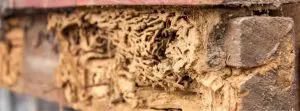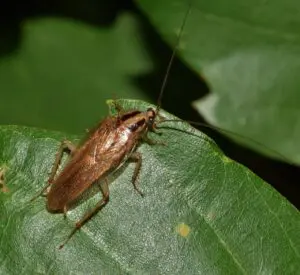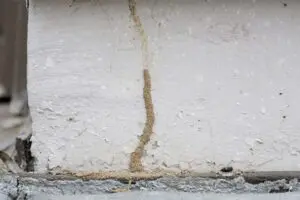
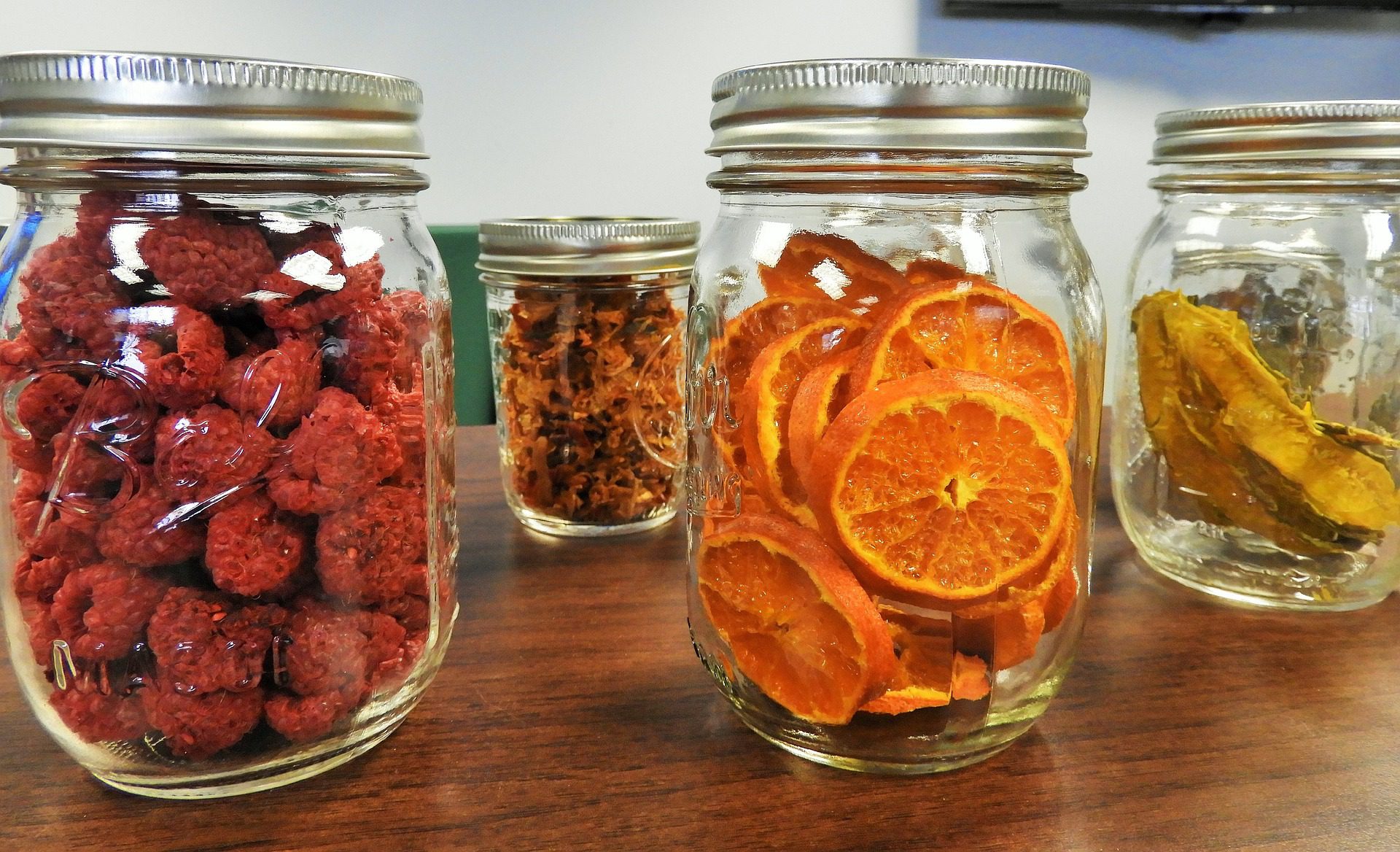
Fruit flies may not be very scary pests, but they certainly are annoying. If you’re looking for the best ways to eradicate these nuisance pests, look no further than this guide to eliminating and preventing fruit flies.
What Do Fruit Flies Look Like and Where Do They Come From?
Fruit flies are tiny flying insects that only grow to be around 3 or 4 mm long. They have a pair of feathery antennae and a pair of translucent wings.
Fun fact: while most fruit flies only have one pair of wings, some individuals have two pairs due to a mutation in the gene called ultrabithorax.
Fruit flies are often mistaken for gnats but there are a few ways to tell the two apart. First, A fruit fly’s body is roundish and reminiscent of a house fly’s body shape, while gnats are long and skinny with dangling legs- closer in appearance to a mosquito. Second, fruit flies are tan or black in color while gnats are dark gray or black. The final and perhaps most obvious difference is in the eyes- a gnat’s eyes are tiny and almost impossible to see while a fruit fly’s eyes are large and red or sepia in color.
The thing about fruit flies is that infestations seem to appear out of thin air- one day there are no flies and the next, there is a fruit fly army. This is because fruit flies reproduce extremely quickly. Fruit flies are sometimes introduced by way of grocery store produce, but most infestations start when an adult fly wanders in from the outdoors, lured by the smell of something fermenting. When the fly finds the source of the smell, it lays its eggs nearby. In optimal conditions, fruit flies only live for around 40 to 50 days. During this short existence, an adult female can lay up to 500 eggs which hatch within 24 to 30 hours. The larvae grow into adults within 8 to 10 days of hatching. In other words, it only takes a single fly laying a single batch of eggs to cause an abrupt infestation.
Are Fruit Flies Dangerous?
For the most part, fruit flies are considered a nuisance pest, not a hazardous pest. They cannot bite because they lack the piercing and sucking mouthparts that are characteristic of blood-feeding insects. That being said, fruit flies are still flies and as such they hang out in very germy places like garbage cans and clogged sink drains. While in such places, their bodies and legs get covered in disease-causing bacteria like E. coli, listeria, and salmonella. Each of these bacteria can cause food poisoning, which can be life-threatening in severe cases. The pathogens that fruit flies pick up get transferred to every surface they land on, including food and food prep surfaces. Any contaminated food or surfaces that are used can lead to illness.
What Attracts Fruit Flies?
Above all, fruit flies are attracted to fermenting items and moist environments. Most commonly they are drawn in by rotting fruits and vegetables, open alcohol containers, vinegar, sugary or greasy spills, decaying meat, mops and mop buckets, dirty drains, garbage disposals, and garbage bins containing food waste.
How To Eliminate Fruit Flies
Fortunately, fruit flies are not very smart and can be trapped easily. A proper trap lures the flies in with bait and doesn’t allow them to leave once they enter. The flies are able to follow the scent into the trap, but once inside they cannot find their way out and they subsequently die inside the trap. The best traps use dish soap, which breaks the surface tension of the liquid causing the flies to sink when they land rather than being able to sit on the surface.
To make a fruit fly trap, you’ll first need a jar, bowl, drinking glass, or tupperware container. Next you’ll need bait. The following recipes are quite effective for luring in fruit flies:
- Vinegar and Liquor: In your container, combine one part vinegar (ideally apple cider vinegar or balsamic vinegar), one part alcohol (either rubbing alcohol or a liquor like vodka) and a drop of dish soap. The vinegar can be replaced with wine or beer. The rubbing alcohol or liquor in this recipe kills the fruit flies, so the dish soap is just an added precaution.
- Banana and Beer: Cut up a very ripe or rotting banana and place the pieces into your container. Pour in enough beer to mostly cover the banana. Add a drop of dish soap. Stir gently to distribute the soap.
- Milk, Sugar, and Black Pepper: On the stovetop or in the microwave, heat up ½ cup of milk and 2 teaspoons of sugar. Heat and stir until the sugar is dissolved. Pour the mixture into your container and add a drop of dish soap. Stir to distribute the soap. Sprinkle black pepper over the mixture.
Finally, you’ll need either plastic wrap, tin foil, a piece of paper, or a cone coffee filter to complete your trap.
To assemble a trap using plastic wrap or tin foil: after placing bait into your container, cover the container’s opening with plastic wrap or tin foil and secure it using a rubber band. Poke several holes into the plastic or foil using a toothpick or pencil tip, making sure the holes are not too big.
To assemble a trap using a paper cone or cone coffee filter: If you are using paper, roll the paper into a cone that has a small opening at the pointy end. Use tape to secure it. If you are using a coffee filter, poke a small hole into the pointed end of the filter. After adding bait to your container, place the paper cone or filter into the opening of the container with the pointed end down. Fold the edges of the paper or filter over the edges of the container to eliminate large openings. The only opening through which the flies can enter should be the small hole in the middle.
One trap is sometimes enough, but to get the full effect of fruit fly traps it is a good idea to make several and distribute them around problem areas.
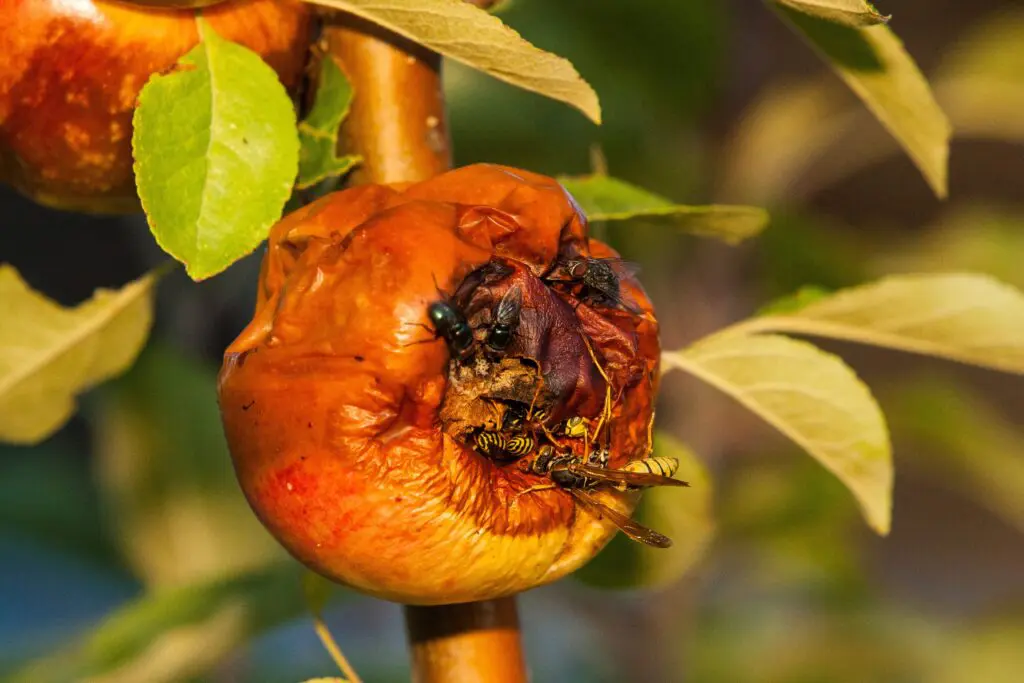
How To Prevent Future Fruit Fly Infestations
The best way to prevent a fruit fly infestation is by maintaining a clean environment. Of course this is much easier said than done, so here are the four key steps for maintaining a fruit-fly free property:
- Properly store food, alcohol, and vinegar. Keep fruits and vegetables refrigerated or in an airtight container, and dispose of them as soon as they go bad. Avoid bringing new fly eggs onto your property by washing all produce before storing it. Keep alcohol and vinegar in sealed containers. Rinse and properly dispose of used alcohol and vinegar containers.
- Promptly clean spills. Spills and food crumbs that are not cleaned will start to go bad and they will eventually attract fruit flies. Be sure to promptly clean up food residue, especially in mostly undisturbed areas like the back of the pantry or beneath the fridge.
- Properly store garbage. Keep all garbage, especially food waste, in a garbage can that has a tight-fitting lid. Regularly empty indoor garbage cans and wash them every so often.
- Eliminate moisture buildup. Immediately empty mop buckets after using them. Maintain sink drains and garbage disposals, making sure they do not get clogged. If you are worried about eggs in a clogged drain, use a bacterial digester. This will both unclog the drain and kill any eggs that have been laid there.
If traps and prevention methods are not doing the trick to get rid of fruit flies, Excel’s got you covered. One of our expert technicians will provide you with a free inspection and estimate. When you’re ready, we will work with you to build the fruit fly control plan that best suits your needs. Call Excel, and exhale.




